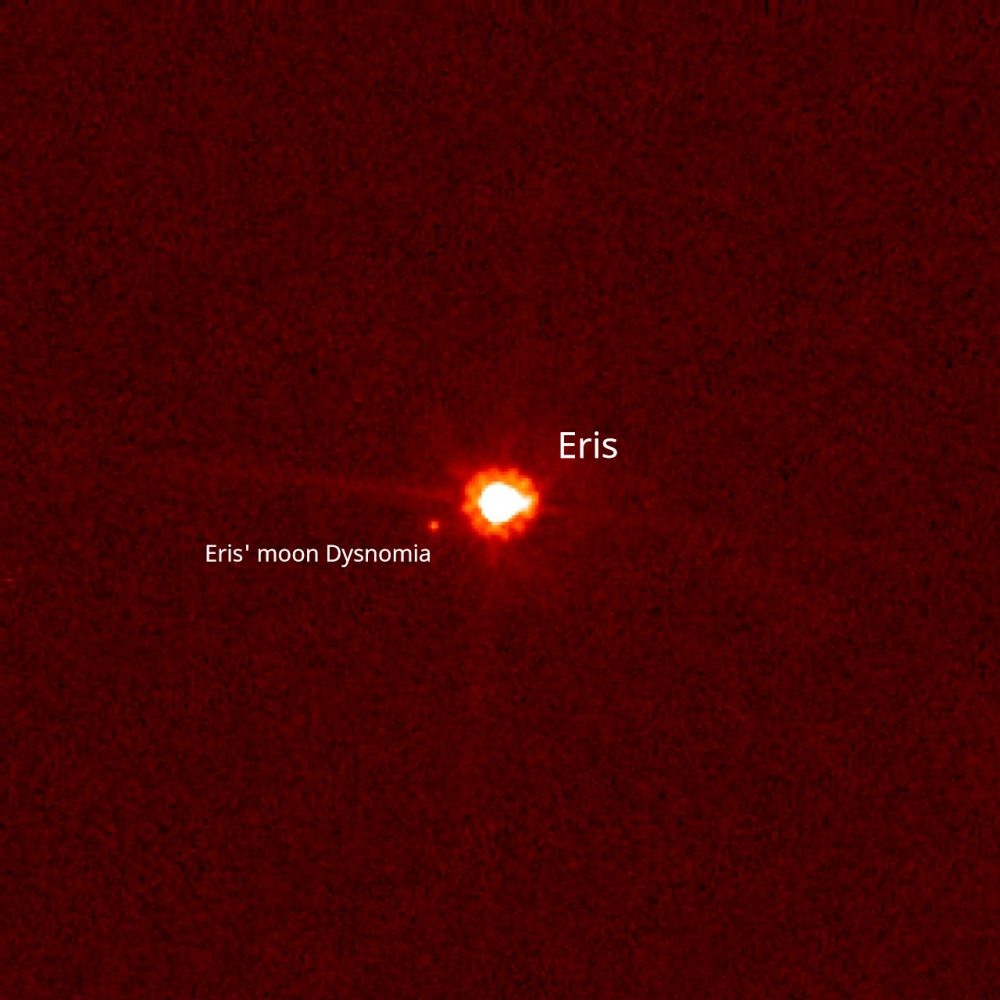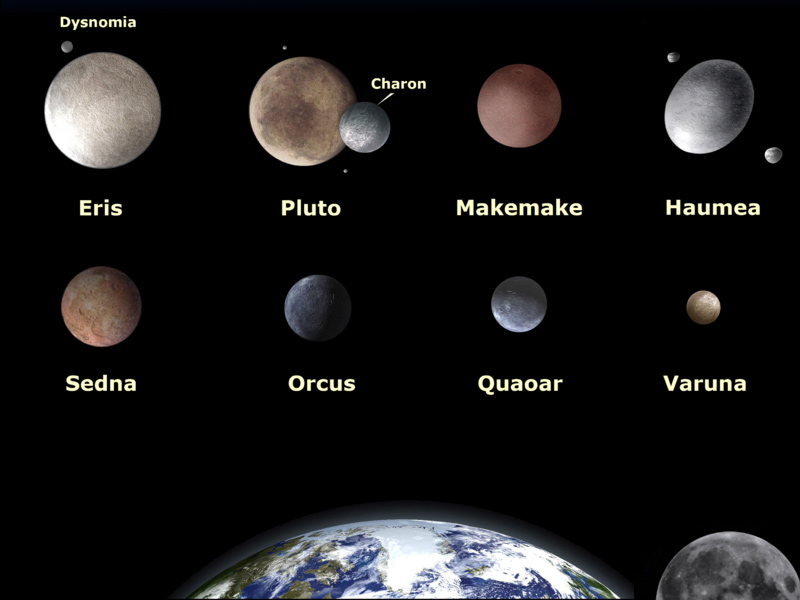
On January 5, 2005, the Palomar Observatory-based team led by Mike Brown discovered a large world, later known as Eris, after systematically scanning for large outer Solar System bodies for several years. Unfortunately for Pluto, this was the beginning of the end for its official planet title.
The early 2000s were a hotbed in the finding of dwarf planets. With the discovery of Quaoar in 2002, then Sedna (2003), Haumea (2004), Orcus (2004), now Eris, people were beginning to question the total number of planets in the Solar System.
Eris is the most massive and second-largest known dwarf planet in the Solar System. It’s nearly three times more distant than Pluto and has an orbital period of a grueling 558 years, where it carries one known moon, Dysnomia, with it.

Because Eris appeared to be larger than Pluto at first, NASA initially described it as the Solar System’s tenth planet, and many others followed. This, along with the likelihood of many other objects of similar size being discovered in the future, prompted the International Astronomical Union (IAU) to define the term planet for the first time.
After a year of debate, the IAU definition was approved in Aug. 2006. This set the qualifications to become an official planet or otherwise. Out of this, Eris was classified as a “dwarf planet,” along with Ceres, Haumea, Makemake, and famously knocking Pluto down with them. This reduced the number of known planets in the Solar System to eight, the same as before Pluto’s discovery in 1930.
So, what qualifications must be met to be a planet? According to the 2006 definition, in the Solar System, a planet is a celestial body that:
- Is in orbit around the Sun
- Has sufficient mass to assume hydrostatic equilibrium (a nearly round shape)
- Has “cleared the neighbourhood” around its orbit
Unfortunately for Pluto, Eris, and the other dwarf planets, they fall short at number three. This is because these smaller bodies don’t have the gravitational pull to clear out the large number of asteroids that share their orbit like the larger planets could. “Clearing the neighborhood” is one of the essential steps for the IAU to be deemed a planet.
Featured image: Arin Waichulis/Hubble Space Telescope
Enjoy reading Space Explored?
Help others find us by following in Apple News and Google News. Be sure to check us out on YouTube, Twitter, Facebook, and Instagram, join our Discord, join the discussion on our Reddit, and don’t forget the Space Explored podcast!
FTC: We use income earning auto affiliate links. More.





Comments